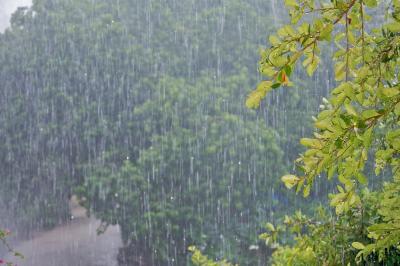Observations Show a Seasonal Delay of Tropical Rainfall
The tropical rain belt moves seasonally between the southern and northern hemispheres, providing water resources for ~40% of the world’s population. Model projections show that global warming will enhance the amplitude, the range of the wet and dry seasons, and delay the onset of seasonal rains. By carefully examining multiple observational datasets and climate simulations, scientists discovered observational records during 1979 – 2019 already show a delayed onset of tropical rainfall over land. Both the increase of greenhouse gases (GHG) and the decrease of anthropogenic aerosols (AER) were found to play important roles in the seasonal rain belt delay of recent decades.
A delayed onset of seasonal rainfall over tropical land could have far-reaching impacts for the large populations that live in the tropical region. For example, a later onset of monsoon rainfall could increase the likelihood of extreme weather events, like heat waves and wildfires, and affect crop production. While previous studies identified a seasonal rainfall delay in climate model projections of the future, this study detected a corresponding signal in the observational record for the first time. This work provides new evidence of the human footprint on Earth's hydrological cycle at continental and regional scales.
This study analyzed eight observational datasets and five prescribed external forcing simulation consisting of 243 simulations. Results show delays of 4.1 days and 4.2 days over the tropical land of the Northern Hemisphere (or northern tropical land) and the Sahel, respectively, during 1979 – 2019—most of the delay is accounted for by external forcing mainly from GHG and AER. Researchers used single forcing simulations to isolate the impacts of different types of external forcing and found that GHG and AER modulate the effective atmospheric heat capacity (i.e., the ability of the atmosphere to store heat) to generally delay and advance the timing of seasonal rainfall, respectively. The accelerated increase of GHG and decrease of AER contribute to the observed phase delay of the last four decades, with GHG more important in the northern tropical land and AER more important in the Sahel. Interestingly, the increased GHG enhances the effective atmospheric heat capacity by increasing temperature, while the decreased AER enhances atmospheric heat capacity by increasing relative humidity. The further increases of GHG and decreases of AER predicted for the future will amplify the seasonal delay of tropical rainfall.

